-
News & Trends -
Sales -
Marketing Related Topics -
B2B Software Guides Related Topics -
Free Tools & Resources -
- About Us About Us


A unique selling proposition (USP) is a value statement that explains why your business is better than the competition. Typically written as an engaging slogan, the USP expresses a key differentiator that's valuable to your customers yet neglected by your competitors, whether that be outstanding service, low prices, or some other factor. Businesses research their audience to find their differentiator, then write a USP to use in their marketing material and sales pitches.
Businesses create a USP to communicate to potential buyers how their brand, product, or service stands out from the other businesses they might be considering. USPs are used throughout sales processes by both sales and marketing teams. Marketers typically place their USP across their marketing assets (e.g., website, marketing emails) to get potential customers into a buying mindset during lead nurturing. Salespeople use the USP to craft their full sales pitch.
USPs most commonly manifest as slogans (around 4-8 words), which are used as headlines for advertisements like social media ads and for web pages like the home page, product page, and landing page. Sometimes businesses will also add a short blurb underneath it elaborating on the USP. Employing a USP requires three overarching steps related to research, writing, and strategic usage:
To create your own effective USP, start by identifying your target audience so you can speak to their desires. Next, brainstorm some differentiators using various methods like interviewing your customers and examining your competition for gaps in their offerings. From there, pick a few of your most unique value propositions and turn them into first drafts of your USP, which you’ll then revise and A/B test. Lastly, use the winning USP to support your marketing and sales strategies.
If you look at enough USPs, you’ll start to notice that most of them express one of seven common value propositions in their own unique way. This includes things like price, service, logistics, features, and more. Before writing your USP, you can learn about these value propositions and see if you can use them to position your product as better than your competition’s.
Below are seven of the most common value propositions:
Although they're known to be effective, you don’t have to use these value propositions. If you think of another reason why your business is different from and better than the competition, use it. Now that you know the basics, it’s time to start creating your own USP.
The process to building an effective USP starts with identifying your target audience and doing research to find your unique value proposition. Next, you’ll pick two value propositions and write out some rough draft USPs before revising and testing them. Lastly, you’ll use them to create your sales pitch, better advertisements, and arresting web copy. Check out these three main steps below, and expand to see details on the substeps involved in each.
You have to do research to figure out which of your value propositions is unique and valuable enough to deserve the spotlight in your USP. Of course, what’s valuable depends on your audience’s tastes, so first identify your customers and their common frustrations. Next, ask your customers why they chose you and investigate your competition’s USPs. By the end of this process, you should have a key differentiator you can use to write your own USP.
After you’ve done this research, you’ll likely have multiple value propositions that you feel would work well in your USP. But, it’s time to narrow them down and pick the most unique and valuable, and turn that value proposition into a shining USP that’s written down and usable.
Now that you have a polished and tested USP, it’s time to put it to use. Plaster it across your website and ads, and use it to develop a sales pitch to use in one-on-one meetings with prospects. For your USP to do its magic, your potential buyers need to see and hear it.
Studying USP examples is a great way to gain inspiration for your own USP. Below, we’ve listed USPs from such reputable companies as EY, Dell, Robinhood, and TOMS. Each USP corresponds with one or two of the common value propositions we discussed earlier. And the majority of them show the three essential elements of a successful USP: research, writing, and strategic usage.

Value It Communicates: Corporate responsibility
EY’s USP “builders of a better working world” falls under the category of corporate responsibility or social impact value propositions. EY focuses on helping not only their clients achieve success but also the communities in which they operate. The USP doesn’t explicitly express a unique offer, but the slogan is memorable and paints EY as altruistic and visionary, which is attractive to their clients.
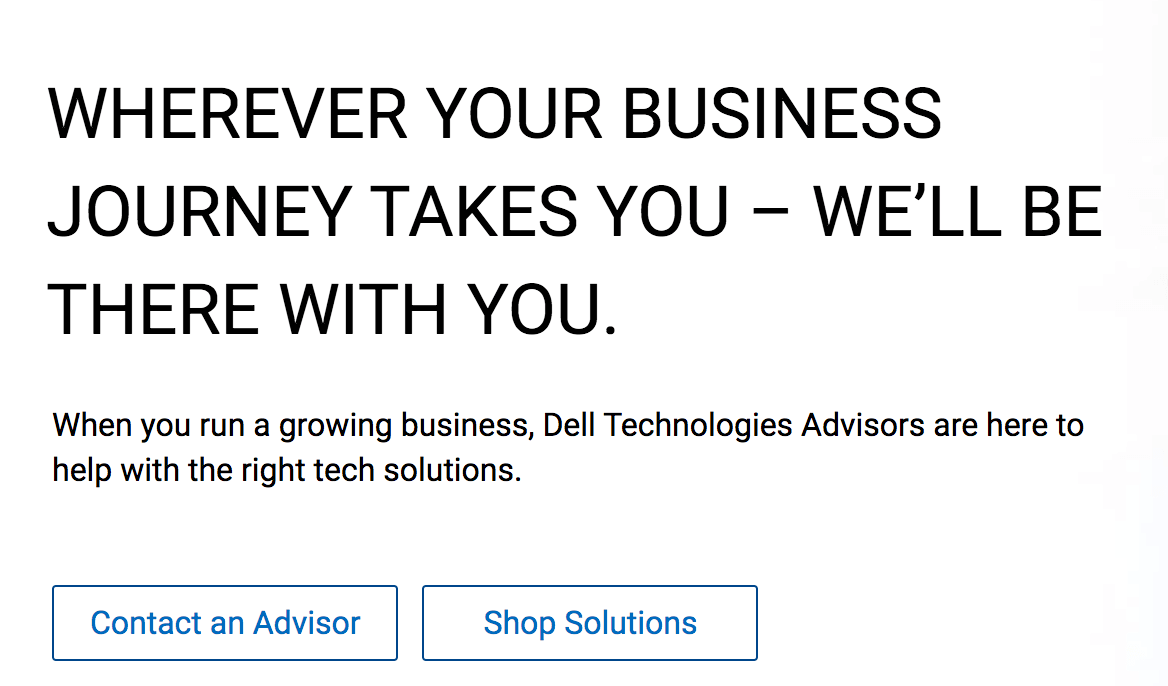
Value It Communicates: Convenient buying process
Dell Technologies’ USP “Wherever your business journey takes you — we’ll be there with you” is communicating a better purchasing process value proposition. It’s clear when supplemented with the subheading telling readers they have free access to Dell’s Technology Advisors. Buying technology for a small business can be difficult, so this value-add is desirable to potential customers and likely uncommon with competitors.

Value It Communicates: Unique feature
MasterClass’ USP is “MasterClass is where anyone can learn from the world’s best.” It’s an impactful unique feature value proposition. No other online course platform offers access to courses taught by famous experts like Malcolm Gladwell, Gordon Ramsay, and Martin Scorsese. Their USP is attractive to potential buyers because it emphasizes that anyone can learn on the platform, no matter their skill or education level.

Value It Communicates: Long-lasting value
Saddleback Leather uses the USP “They’ll fight over it when you’re dead,” which is a form of the durable value proposition, as it implies it’s so durable that it will outlive the owner. People dislike having to replace expensive bags and briefcases, so this is a valuable promise. It also separates Saddleback from the competition since many bags are prone to wear and tear. Lastly, it's memorable and captures the brand’s voice.
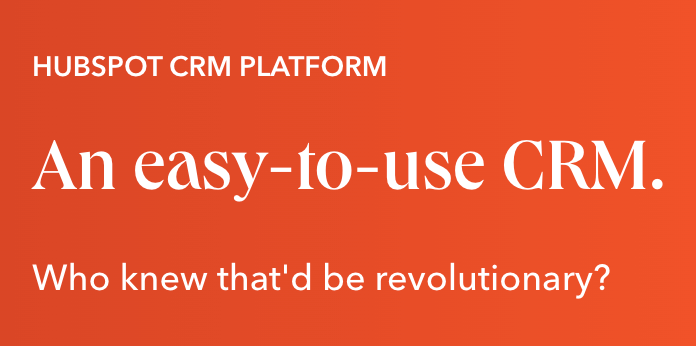
Value It Communicates: Ease of use
HubSpot CRM uses the USP “An easy-to-use CRM. Who knew that'd be revolutionary?” It's an example of an easy to use value proposition. HubSpot is separating itself from its competitors that sell CRM software that’s often difficult to set up and train employees to use effectively. The second sentence of the USP sympathizes with leads who have tried other CRMs and become infuriated at their complexity — this builds trust.
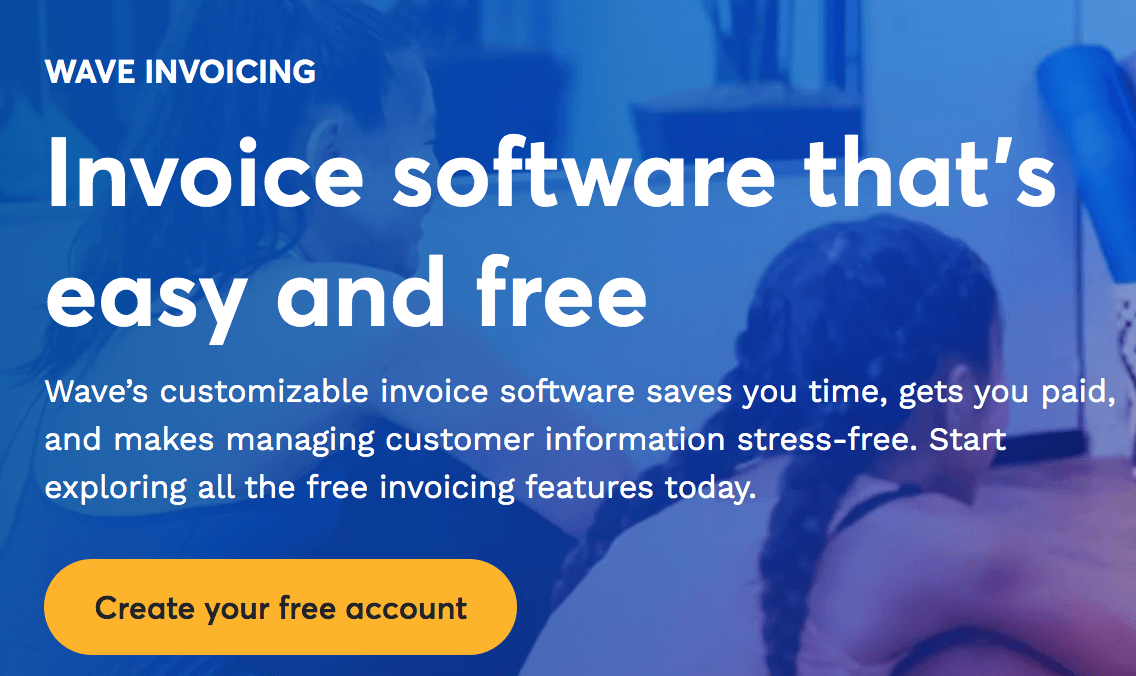
Values It Communicates: Ease of use and affordable price
Wave Invoicing’s USP “invoice software that’s easy and free” is a combination of two value propositions: easy to use and most affordable option. Many of the Wave’s competitors charge fees for invoicing, to the annoyance of their customers. This USP, therefore, lets potential customers know immediately that their invoicing app is completely free of charge, something they’ll find valuable to their small business.
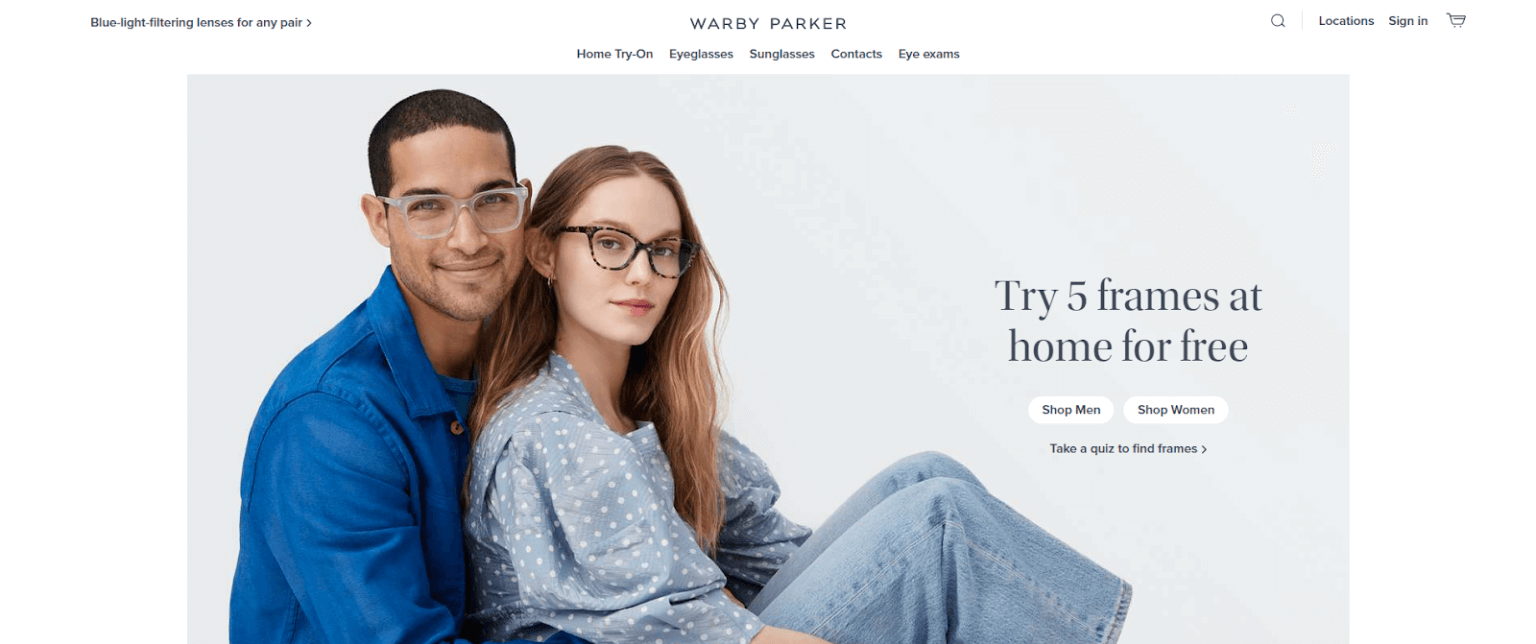
Value It Communicates: Convenient buying process
Warby Parker has a USP that communicates a better purchasing process. The ability to “try 5 frames at home for free” helps generate leads by removing risk or hassle from the purchase. Potential buyers don’t have to go to a store to try them on, which differentiates Warby Parker’s service from other brands. Though the USP is more straightforward than memorable, it does a good job influencing website visitors.
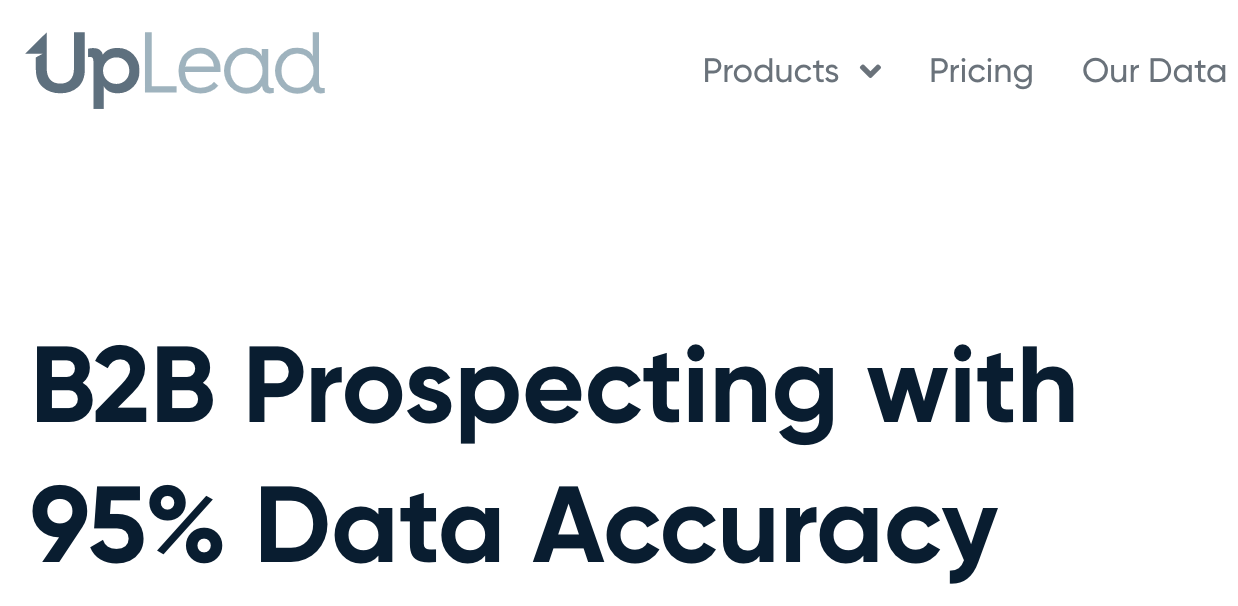
Value It Communicates: Quality service
UpLead's USP is “B2B prospecting with 95% data accuracy,” a form of a better service value proposition. Prospecting tools can be known to sometimes have inaccurate data, which can be frustrating to salespeople because an email sent to a faulty email address wastes their time. So, UpLead is doing a nice job of telling leads that they offer high accuracy, thus better service.
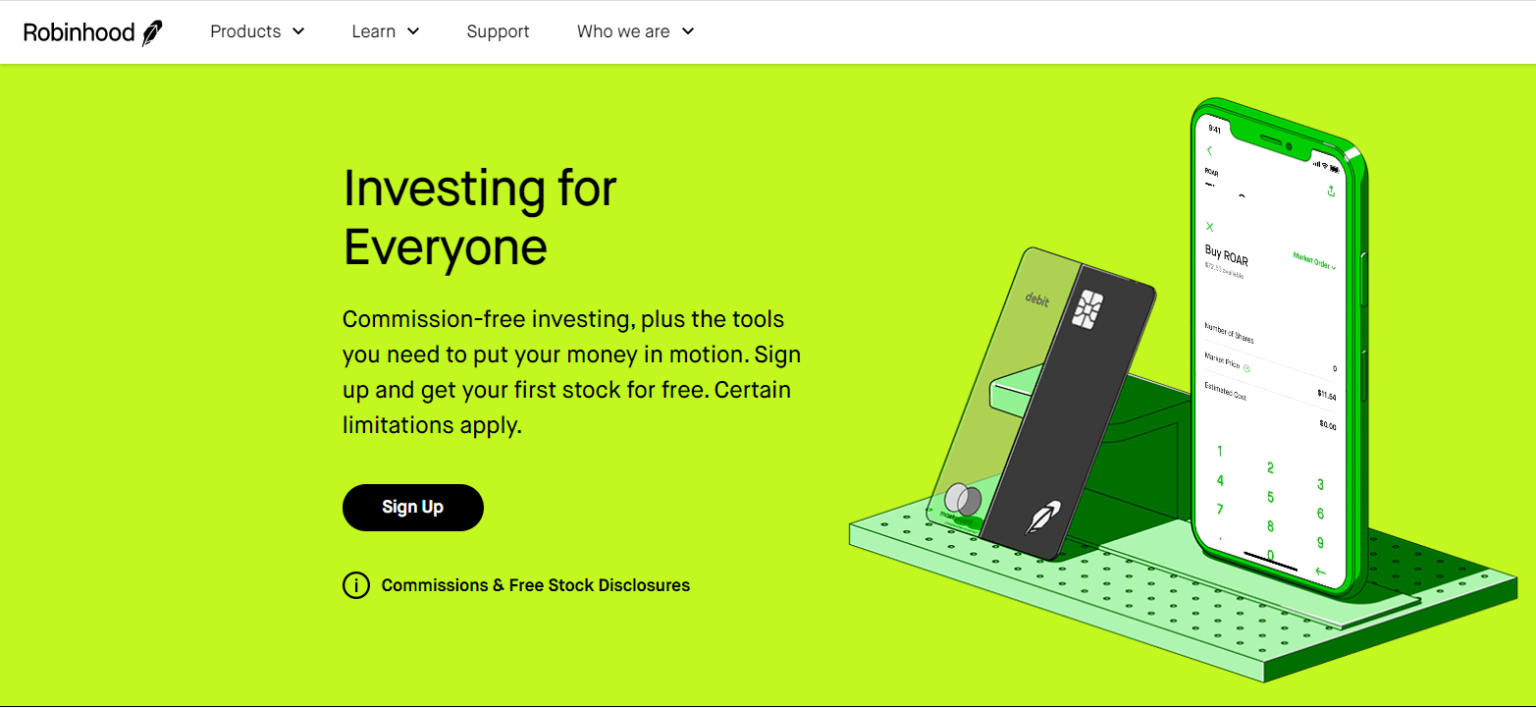
Value It Communicates: Ease of use
Robinhood’s short USP of “investing for everyone” is an easy to use value proposition. They’re declaring that anyone, regardless of investing knowledge or funds, can easily get into investing using their service. They go on to explain in the subheading that the investing is also commission-free, further separating them from competition, which often takes a percentage of earnings from customers as commission.
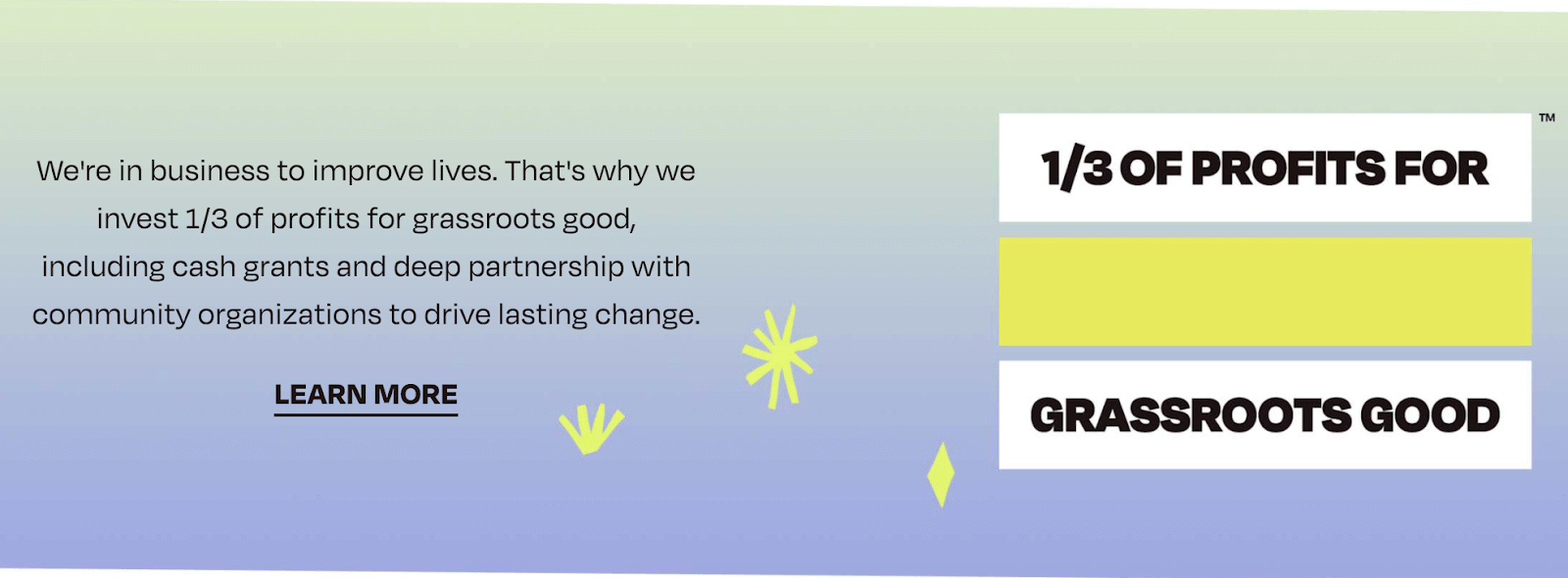
Value It Communicates: Corporate responsibility
TOMS has a USP that is focused on sharing a corporate responsibility value proposition: “1/3 of profits for grassroots good.” Other brands might talk about their comfort or price, but TOMS focuses on how it helps communities, thereby promoting itself as the company that gives back. This differentiating factor should capture customers who value charity and want to feel like they’re making a difference when shopping.
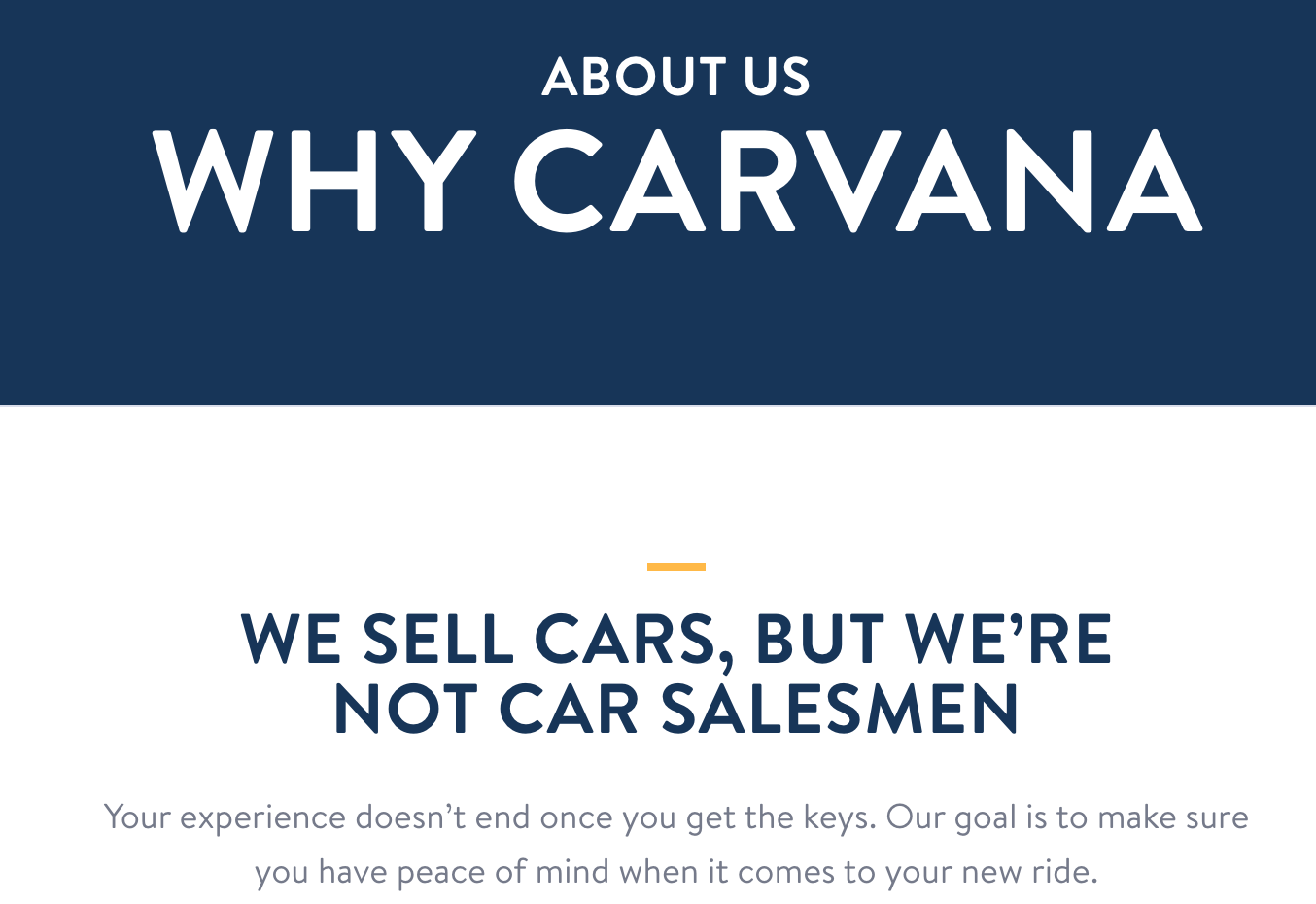
Value It Communicates: Convenient buying process
Carvana’s USP is communicating its better purchasing process value proposition. “We sell cars, but we’re not car salesmen” tells consumers that their salespeople won’t use any of the shady tactics buyers often correlate with car salespeople. Carvana goes on to suggest that they’ll make sure their buyers are satisfied before locking them into the purchase. It also uses a trustworthy voice.
Keep your eyes peeled for other USPs that you come across, and how effective they are in their lead nurturing efforts. Think of your USP as a work in progress, and every so often test your existing USP with a potential new one as you continue getting inspiration from great ones that you come across.
A unique selling proposition expresses how your brand or solution is better than similar companies and is used throughout the sales process. Businesses must write a USP that contains a significant differentiator that customers care deeply about. Salespeople can then expand on that short sentence in their sales pitch. To further bolster your understanding of a USP and a sales pitch, check out our article on the most important sales terms.


Sam is a former SaaS sales rep turned freelance writer. He spent his career selling real estate technology to C-suite executives before switching over to blogging, where he now covers sales, marketing, and small business topics. Sam specializes in lead generation, lead nurturing, and deal closing articles for Selling Signals. When he’s not researching the latest sales trends, he’s either penning short stories, hiking, or reading in NYC’s Washington Square Park.

Selling Signals delivers actionable advice for sales and marketing professionals. Learn strategies that help you hit targets, strengthen customer relationships, and win more business. Get expert advice on lead generation, sales processes, CRM software, sales management, and account management directly to your inbox.
Property of TechnologyAdvice. © 2025 TechnologyAdvice. All Rights Reserved
Advertiser Disclosure: Some of the products that appear on this site are from companies from which TechnologyAdvice receives compensation. This compensation may impact how and where products appear on this site including, for example, the order in which they appear. TechnologyAdvice does not include all companies or all types of products available in the marketplace.